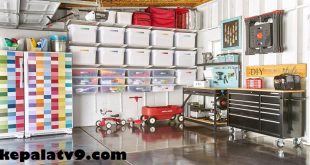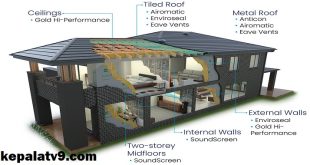With the rise of remote work and the increasing importance of having a dedicated workspace at home, creating an efficient and comfortable home office is essential. A Do-It-Yourself (DIY) home office can be a cost-effective and creative solution to tailor your workspace to your needs. In this article, we will guide you through the process of setting up a DIY home office that fosters productivity and enhances your work-from-home experience.
1. Choose the Right Location
The first step in creating a DIY home office is selecting the right location within your home. Consider factors such as natural light, noise levels, and accessibility. Ideally, your home office should be in a quiet area with ample natural light to boost productivity and reduce eye strain.
2. Plan Your Workspace Layout
Before diving into decorating, plan the layout of your home office. Determine the placement of your desk, chair, and storage solutions. Ensure your workspace promotes good ergonomics to reduce the risk of discomfort or strain during long work hours.
3. Invest in Quality Furniture
Your desk and chair are the most critical pieces of furniture in your home office. Invest in a comfortable ergonomic chair that provides proper support for your back. Your desk should be spacious enough to accommodate your work essentials, such as a computer, monitor, and keyboard. Consider adjustable furniture to cater to your specific needs.
4. Declutter and Organize
A clutter-free workspace is essential for productivity. Use storage solutions like shelves, cabinets, and file organizers to keep your workspace organized and tidy. Invest in cable management solutions to prevent a mess of cords and cables.
5. Personalize Your Space
Personalizing your home office can boost your mood and motivation. Decorate your workspace with items that inspire you, such as artwork, plants, or motivational quotes. Choose a color scheme that promotes focus and creativity.
6. Lighting Matters
Proper lighting is crucial for productivity and eye comfort. Position your desk near a window to maximize natural light during the day. Additionally, invest in task lighting, such as a desk lamp, to illuminate your workspace adequately.
7. Technology Setup
Ensure that your home office is well-equipped with the necessary technology. This includes a reliable internet connection, a computer or laptop, a printer, and any other tools or devices specific to your work.
8. Ergonomics and Comfort
Pay attention to ergonomics to prevent discomfort or health issues. Adjust your chair and monitor to the right height. Use an ergonomic keyboard and mouse to reduce the risk of repetitive strain injuries.
9. Stay Organized Digitally
Organize your digital files and documents efficiently. Use cloud storage solutions and digital project management tools to keep your work organized and accessible from anywhere. kepalatv9.com
10. Create Boundaries
Establish clear boundaries between your work and personal life, especially if you’re working from home. Set specific work hours and take regular breaks to maintain a healthy work-life balance.
Conclusion
A well-designed DIY home office can significantly enhance your productivity and comfort while working from home. By carefully planning the layout, investing in quality furniture, and personalizing your space, you can create a workspace that promotes efficiency and creativity. Remember to prioritize ergonomics, organization, and a clutter-free environment to optimize your work-from-home experience. Your DIY home office should not only meet your professional needs but also provide a comfortable and inspiring space for your daily tasks.



